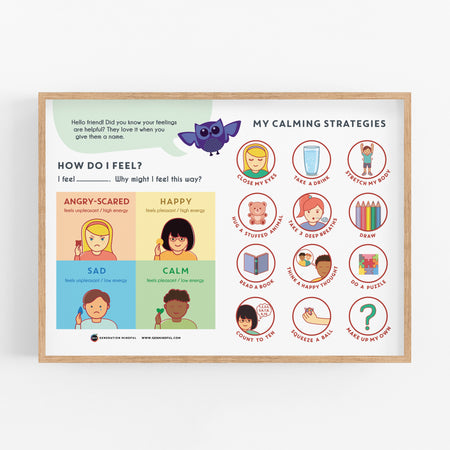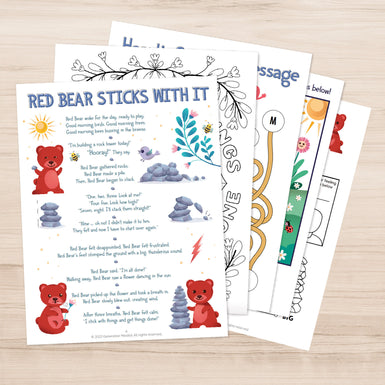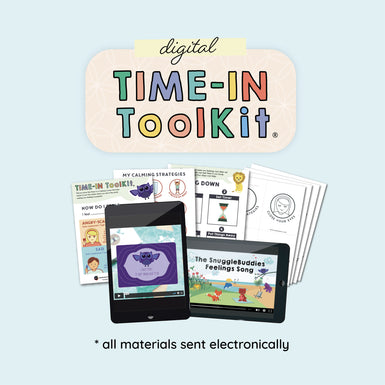Moving from summer break to back to school is a transition, and transitions are tricky for kids, which means they are also tricky for parents. But you don’t have to navigate this alone. We have some tools to make it less stressful for both you and your child.
But first, let’s look at one reason why children may be hesitant to shift gears this school season. Two words: Separation Anxiety.
Now certainly, there are many other aspects that make it challenging for children to transition based on circumstance, brain development, and individual biochemistry and temperament, but for the sake of this article, we are focusing on your child’s fear of being away from you.
Back-To-School Separation Anxiety
Our greatest need as humans is attachment. Our children instinctively know this and communicate this need through their behavior. Does your child struggle to say goodbye or scream at drop-off? Do you find that your child is clingy? How about resisting bedtime with a zillion “one more, mommy” requests?
While separation anxiety is most intense for babies and toddlers, older children may experience similar sensations when sick, frightened, or feeling unsure or stressed. This is because children, as an innate survival mechanism, are wired to seek their deepest attachments for safety and security. A perceived threat will move them away from danger and toward protection - aka you.
But is a transition really a threat? Well, to a child’s developing brain, often yes. They process the world very concretely and so anything that is outside the familiar can throw a real wrench in their regulation. So, that thing called school that happened eight weeks ago may be a trigger.
Another thing that registers as a threat to our child’s developing brain is being away from you. School requires them to leave their safe attachment and be with a less familiar caregiver - to go from their safe space (aka home) to a place where things are new and different.
7 Proactive Tools For Back-To-School Anxiety
Here are 7 tools to help prepare you for the back-to-school transition.
1. Shift routines now
A week or maybe days before school begins, bring some simple school-year rituals back into your home. This may include setting a sensible bedtime, selecting tomorrow’s clothes, and a visual chart to help with morning routines.
2. Visit the school
If it is available to do so before the school year begins, plan a tour with your child or attend available school orientations. Spend time on the playground or in the classroom and introduce your child to their teacher. While we may feel comfortable with our children returning to school, our children often don’t feel this way until they have a connection with those who will be watching them in our absence. We can begin to foster that connection now.
3. Discuss the transition
If visiting the actual school is not an option, verbally prepare your child for the transition. You may choose to review morning and after-school rituals, review class schedules, lunch and recess periods, and what they can expect during class. Break this up over the course of days and in age and developmentally appropriate chunks. Because our child's nervous system mirrors ours, our excitement and confidence will help reduce their anxious feelings.
4. Role-play
A great way to prepare kids, especially younger ones, is through role-playing. Enact the school day with your child. First, invite your child to be the parent/teacher/bus driver while you are the student. Model what a day may look like. Then, switch, encouraging your child to take the student role. This helps them feel safer and in control. You may also practice skills like asking questions, introducing themselves, asking to play on the playground, or anything else that they feel uneasy about. In offering these playful experiences for your child, you help prime their brain for what is to come, replacing fear and aloneness with connection and silliness.
5. Arrange play dates
If you know that your child is sharing classroom space with someone, get a playdate on the books before school starts. Studies show that the presence of a familiar peer during school transitions can enhance a child’s emotional adjustment to their new environment.
6. Practice separation
For younger children, you may choose to practice the separation before school begins. Simply taking a walk around the block or leaving for the store while they are in the care of another safe adult helps establish trust that you will always come back. Slowly increase the increments that you are gone and build from there.
If you are unable to leave your home, practice within the home. Start next to your child and slowly increase separation until you are in another room. Meet your child where they are. If they can only be away for a few minutes, start there and build time. You may find that using a timer makes this process more concrete for your child.
7. Take a Time-In
This is an opportunity to check in with how your child feels about the transition back to school. Using feeling charts, your child can communicate whether they feel excited, scared, sad or some other emotion. Your child trusts you so, instead of telling them that they have nothing to worry about and that they will have fun, listen and validate, reflecting on what you hear. If your child isn’t into communicating verbally, invite them to draw how they feel or measure how they feel. “How big are your nervous feelings?” Communicate that our feelings are visitors, they are valid, and they are useful. Discuss calming strategies to help your child anchor their anxiety.
3 In The Moment Tools For Back-To-School Anxiety
1. Focus on the return
Instead of focusing on your departure, give energy to the next connection moment with your child. This helps your child relax into the transition instead of the impending doom that you will soon be separated. Trusting they will see you again, your child will feel less of the need to chase your attachment. This may sound like, “After school, I will pick you up and we will spend some time snuggling up together reading your new book!”
2. Offer brief goodbyes
A brief goodbye routine can help your child process the transition. Keep this ritual consistent each day so that, over time, they know what to expect, which helps them remain regulated and create stability around the transition from being with you to being without you. This may look like you offering a hug and saying, “I love you and I will see you soon” before leaving.
3. Give a token
Another simple tool is to give a token of you to your child that they can take with them to school. This may be something they put in their pocket or a bracelet they wear or a little heart you draw on their hand. It could be a picture of your family or a little note in their lunchbox. Enroll your child and choose something meaningful together. This helps your child feel closer to you when you are not around.
If your child does become emotional around the back-to-school ritual, keep in mind that this doesn’t mean you are doing it “wrong” Remind yourself that you are a good parent and that your loving effort will help build resilience.
Your child’s tears are a way of releasing anxiety, and when they can trust you to hold space and validate their experience, to guide them through it, they build a deeper sense of connection with you, which will help them trust that bond even when you are not around.




























